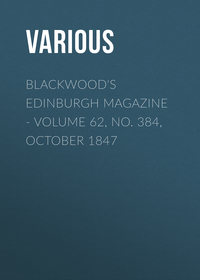 полная версия
полная версияBirds and all Nature Vol VII, No. 3, March 1900

Various
Birds and all Nature Vol VII, No. 3, March 1900 / Illustrated by Color Photography
THE ENGLISH SPARROW
F. S. PIXLEYYou may talk about th' nightingale, th' thrush 'r medder lark,'R any other singin' bird that came from Noah's ark;But of all feathered things thet fly, from turkey-buzzard down,Give me the little sparrer, with his modest coat o' brown.I'll admit that in th' springtime, when th' trees 're gettin' green,When again th' robin red-breast 'nd th' bluebird first 're seen;When the bobolink 'nd blackbird from th' southland reappear,'Nd the crow comes back t' show us that th' spring is really here —I'll admit that in the springtime, when the groves with music ring,Natur' handicaps th' sparrer; he was never taught to sing;But he sounds th' Maker's praises in his meek 'nd lowly way;'Nd tho' other birds come back at times, he never goes away.There's a cert'in sort o' people thet, when th' skies 're bright,Will hang around 'nd talk about their friendship day 'nd night;But if things cloudy up a bit 'nd fortune seems t' frown,They're sure t' be th' first t' kick a feller when he's down.So when the summer skies 're bright it's easy 'nough t' sing;But when it's cold 'nd rains 'r snows it's quite a diff'rent thing.In autumn, when th' nippin' frosts drive other birds away,Th' sparrer is th' only one with nerve enough t' stay.'Nd even in midwinter, when th' trees 're brown 'nd bare,'Nd th' frosty flakes 're fallin' thro' th' bitter bitin' air,Th' sparrer still is with us – t' cheer us when we're glum,Fer his presence is a prophecy of better days t' come.Th' sparrer's never idle, fer he has t' work his way;You'll always find him hustlin' long before th' break o' day.He's plucky, patient, cheerful, 'nd he seems t' say t' man,"I know I'm very little, but I do th' best I can."What more can you 'nd I do than t' always do our best?Are we any more deservin' than th' "little British pest?"So, when you talk of "feathered kings" you'd better save a crownFer the honest little sparrer, with his modest coat o' brown.THE PEACOCK
With pendant train and rustling wings,Aloft the gorgeous peacock springs;And he, the bird of hundred dyes,Whose plumes the dames of Ava prize.– Bishop Heber.IT WAS a saying among the ancients, "As beautiful as is the peacock among birds, so is the tiger among quadrupeds." The birds are of many varieties, some white, others with crests; that of Thibet being considered the most beautiful of the feathered creation. The first specimens were brought to Europe from the East Indies, and they are still found in flocks in a wild state in the islands of Java and Ceylon. The common people of Italy describe it as having the plumage of an angel, the voice of a devil and the intestines of a thief. In the days of king Solomon his navies imported from the East apes and peacocks, and Ælian relates they were brought into Greece from some barbarous country, and that a male and a female were valued at a hundred and fifty dollars of our money. It is said also that when Alexander was in India he saw them flying wild on the banks of the river Hyarotis, and was so struck with their beauty that he imposed a fine on all who should slay or disturb them. The Greeks were so much taken with the beauty of this bird, when first brought among them, that it was shown for money, and many came to Athens from surrounding countries to see it. It was esteemed a delicacy at the tables of the rich and great and the birds were fatted for the feasts of the luxurious. Hortensius, the orator, was the first to serve them at an entertainment at Rome, and they were spoken of as the first of viands. Barley is its favorite food, but as it is a proud and fickle bird there is scarce any food it will at all times like. It lays waste the labors of the gardener, roots up the choicest seeds, and nips favorite flowers in the bud. He requires five females to attend him, often more. The peahen is compelled to hide her nest from him that he may not disturb her sitting. She seldom lays above a dozen eggs, which are generally hatched about the beginning of November. Though the peafowls invariably roost in trees, yet they make their nests on the ground, and ordinarily on a bank raised above the common level. The nest consists of leaves and small sticks. From January to the end of March, when the corn is standing, the flesh is juicy and tender, but during the dry season, when the birds feed on the seeds of weeds and insects, it becomes dry and muscular.
In some parts of India peacocks are extremely common, flocking together in bands of thirty and forty in number, covering the trees with their splendid plumage and filling the air with their dissonant voices. Captain Williamson mentions that he saw at least twelve or fifteen hundred from where he stood.
Peacocks are very jealous of all quadrupeds, especially of dogs. When they are discovered in a tree situated on a plain, if a dog is loose and hunts near it, the birds will rarely move but will show extreme uneasiness. One of these birds in the north of Ireland was a curious mixture of cruelty and fun. He had four mates but he killed them all successively by pecking them to death, for what cause no one could ascertain. Even his own offspring shared the same fate, until his owner placed the peafowl's eggs under a sitting hen and forced her to hatch the eggs and care for the young. His great amusement was to frighten the chickens. There were two iron troughs in which the food for the chickens was placed daily. No sooner had they gathered about them, when the peacock would erect his train, rattle his quills together with that peculiar rustling sound that is so characteristic of these birds, and march slowly toward them. The poor little chicks would slowly back away from the troughs as the peacock advanced, not wishing to lose sight of the food yet not daring to remain in defiance of their persecutor. By degrees he got them all into a corner, crouching together and trembling when he would overshadow them with his train, place the ends of the feathers against the wall so as to cover them, rattle his quills, in order to frighten them, and then strut off proud of the trick he had played. He did not care for the food which he left untouched.
The peacock's disposition is as variable as that of many other creatures, some being mild and good-tempered, while others are morose and jealous in the extreme. His train, though popularly called his tail, is in reality composed of the upper tail coverts, which are enormously lengthened and finished at their extremities with broad, rounded webs, or with spear-shaped ends. The tail feathers are of a grayish brown color seven or eight inches in length, and can only be seen when the train is erected, that being its appointed task. The female is much smaller than her mate and not nearly so handsome, the train being almost wanting, and the color ashy brown, with the exception of the throat and neck, which are green.
The peacock lives about twenty years and the beautiful variegated plumage of the male's train appears about the third year after birth.
THE SONG OF THE LARK
ADA M. GRIGGSThe peasant girl, her feet all bare,With her rustic grace, has a noble air.She's queen of the stubble-field and she,In mind, is free as the lark is free.Her thought, above all meaner things,Is soaring with the lark that sings.No hampered child of the city streets,Who bows his head whomsoe'er he meets,Who toils for a pittance with little rest,But should envy the freedom in this breast.She's the child of nature; vice does not lure;She's clothed upon with a life that's pure.The wholesomeness of her atmosphereDoes more for man than his logic drear.Who delves in books' philosophic lore,Sees nature's problems – but little more.'Tis God's own child who has eyes to seeWhat is closed to the eye of philosophy.The artist who dabbles with color and brushSees but the reflection of nature's flush.The skilled musician knows not pure tone;He hears but the resonance of his own.'Tis the peasant girl, as she hurries along,Who hears the lark's good morning song.She hears it with gladness; her heart is gay;All nature greets her in festal array.The lark makes her world a world of songHis notes in her heart sing her whole life long.She's the true musician, artist and seer;She looks upon nature with vision clear.The lark brings her day without shade or sorrow,And crowns each day with a sweet tomorrow.He gives a joy only nature can,A boon sent down from heaven to man.O little lark, sing on! sing on!The country dark new life will don.The tones thou'lt hurl from thy tiny heartPeace will unfurl and new joy impart.THE HERALD OF SPRING
CHARLES E. JENNEYBefore the snow fliesA bit of Summer skiesComes flitting downThrough Winter's frownTo cheer up waiting eyes.ONE gray February day, when dirty patches of snow are still lingering on the north side of rocks and walls, as you gaze across a dreary landscape, you espy a bit of bright color on the bar-post that brightens up your spirit. 'Tis the first bluebird, and that means that spring is coming. His cheery little ditty seems to say, "Spring is coming, spring is coming, spring is here." He has been farther south during the winter, for he seldom stays in Massachusetts in December and January and he thinks it a little chilly just now, for his feathers are all fluffed up around him so that he looks like an animated dumpling.
He has come back to locate his nest site – to see first if the old nest hole of past years is suitable, for he is a great home-lover, and, if not, to select a new one.
In March you will see the bluebirds often investigating rotten bar-posts, hollow cedars, old woodpecker holes, and decayed apple-tree stumps. And in the latter part of the month the females are with them.
Then one April day Mr. Bluebird sings always from a limb of a certain apple-tree, and down in the trunk, in an abandoned woodpecker's hole, are four pretty light blue eggs.
Every old orchard has its family of bluebirds, and they come back to the same nest every year until something happens to scare them away from it. A rotten bar-post or fence rail is a promising site also, and they peck out a hole with their short bills and round it out quite as neatly as that feathered carpenter, the woodpecker. When they get in a little ways you may see the chips flying out of the aperture, though no worker is in sight, and when it is almost done every now and then a blue head will pop out with a beak full of loose wood, which is tossed away. Then a few clean chips are left and the bird's own soft down lines the home.
Often they will make use of wooden boxes set on poles or placed in the trees for their benefit. They are very quiet, peaceful birds, so the entrance to their homes should never be much larger than their own small bodies require for admittance.
The scrubby cedars that grow along the New England coast make excellent nooks and corners for the bluebird's home and the berries provide him with food late in the season. I have even found a pair nesting in a cedar grove on the extreme end of a rocky point exposed to the full force of the southeast storms that sweep up Buzzard's bay. Usually, however, they prefer the green fields and orchards of further inland.
One pair for five or six years nested in a hollow about twelve inches deep formed in the crotch where a cedar tree branched into two parts. It could not have been a comfortable or well-chosen home, for it was open to the weather at the top and it would seem as if it must be flooded in a heavy rain-storm. But it was only abandoned by the birds when it had become known to every boy and egg collector in the village as the hereditary estate of this family.
During April and May the bluebird is everywhere visible and audible, but in midsummer he is not so often seen. He is essentially a bird of the spring with us. His familiar contemporaries are the catbird and the robin, but he is the earliest in the year of them all. Sometimes, though not often, he stops all winter with us, and his red breast warms the winter landscape which it dares to challenge.
See him dash from that old fence post after a mouthful of flies or gnats; or hopping from twig to twig in the cedar tree, selecting the choicest of the spicy berries. Sometimes he will venture in among the crowd of talkative sparrows that are harvesting the crumbs in your dooryard, but if they dispute his right he keeps away. The piece of suet hung in the tree near the bird-box, however, is his own, and he views the intruding buntings and trespassing jays from his front porch or dormer window with much indignation.
However, he says very little, uses no bad language like that of the jay, and soon regains the sereneness of temper natural to him. And we like him all the better for it, for, although it is not nice to be imposed upon and we like to see offenders get their deserts, the one who takes life cheerfully and uncomplainingly overlooks or forgets the wrongs he cannot right is the one we like to have as a friend.
MARCH
It is the first day of March,Each minute sweeter than before;The red-breast sings from the tall larchThat stands beside the door.There is a blessing in the air,Which seems a sense of joy to yieldTo the bare trees, and mountains bare,And grass in the green field.Love, now a universal birth,From heart to heart is stealing,From earth to man, from man to earth;It is the hour of feeling.One moment now may give us moreThan fifty years of reason;Our minds shall drink at every poreThe spirit of the season.– Wordsworth.TAMING BIRDS
GUY STEALEYBUT very few of the boys and girls who watch the many species of our birds flit about in the summer time and who listen in delight to their singing, know that by expending a little time and patience they can make these sweet songsters quite tame. I do not mean that the birds are to be caught and confined; I never could bear to see a bird in captivity, and indeed most wild ones will live but a brief time when so served, but that they can be made gentle in their natural state. Where I live, in the Rocky Mountains, there are countless numbers of birds throughout the spring and summer months and, being a great lover of them, I have naturally observed their habits closely. Trusting, therefore, that some of the boys and girls who entertain the affection for them that I do, will see these lines, I venture to give some of my experiences along the path of bird-life.
Some five years ago I constructed several miniature cottages, with verandas, chimneys and all, and placed them on the fences around our garden. The first season two pairs of wrens selected and occupied two of them; a third was chosen by a pair of bluebirds, and the fourth left vacant. Wrens, as you all know, are never much afraid of anyone, but bluebirds are inclined to be shy. After a short time, however, the pair I spoke of would alight within a few feet of where I was weeding vegetables, and soon came to know that where the ground was freshly turned, there were to be found the most worms. Before the summer was over the wrens and bluebirds and I were the firmest of friends. Daily they ran and hopped and peeped under the plants and flowers. And besides giving me their companionship they did a vast amount of good in the garden by keeping it clear of bugs and worms. It was astonishing the number of these they carried to their little ones.
But time stops not, and finally there came cold and frosty nights that warned my little friends, now comprising three families, that the day of their departure for warmer lands was drawing near; and soon I was all alone.
Every year since then has been a repetition of this first, only that I have more houses around now and consequently more tenants. I firmly believe too, that the first three couples still return to their old homes, for the same houses are taken by the wrens every spring and the same one by the bluebirds.
During the winter also, I sometimes have a few bird pets, though they are others than snow birds. The latter I have never been able to make friends with. When the weather is severe I often try to feed them, but with poor success, as they are always very wild. The pets I have reference to are bluejays and campbirds, or as they are more usually called, camp-robbers. Both species stay here the year around.
Last winter I had a laughable time with them. Shortly after the first snow I noticed a pair of camp-robbers – they seem to go in pairs both summer and winter – around our meat-house. If you have never seen them you cannot know what comical birds they are, so solemn and innocent appearing, yet when it comes to stealing – well, they are the greatest and boldest thieves you can find. If they are about and you chance to have anything eatable around and turn your back for a moment you are pretty sure to find it gone when you look again. I remember while camping one fall, of seeing one of them dart down from a tree and take a slice of meat right out of the frying-pan on the fire! But it was too hot to hold long, and Mr. Camp-robber was obliged to relinquish his dainty dinner before reaching his perch again. Arriving there he sat for a long while, looking down at me with a wry face.
But I am digressing, and must get back to my story of the camp-robbers and the meat-house.
A few days after I first saw them, I went in the house to cut some meat for dinner; while there one of the robbers alighted on a bench placed at the side of the door, and stood peeping in. I cut a small piece of meat and tossed it on the step and in a second he had pounced on it and was away. Everyday, from that time on, just at noon, the pair of them would be watching for me, and I made it a rule to put some small pieces of meat or bread on the steps at that hour of the day. As soon as I retreated a little way they would secure them and fly off.
After they had been with me about a month, a bluejay happened along one day, and seeing them at their meal, invited himself to partake of part of it. The camp-robbers seemed somewhat angry at this, but did not venture to remonstrate. The next day there were two bluejays and by the end of a week I had two camp-robbers and seven bluejays looking to me for their daily dinners.
I fed the whole company all winter and when spring came the camp-robbers would almost take food from my hands; in fact they seemed to look to me for protection, when eating, from the bluejays, who were rather overbearing and wanted more than their share.
Whether they will visit me this winter I know not, but I do know that I should be glad to see them again.
THE WILLOW PTARMIGAN
(Lagopus lagopus.)C. C. MIT has been claimed by some ornithologists that this species of grouse is not to be found in this country, but it is now well established that it may be found in northern portions of New Hampshire and northern New York. In summer it is distributed throughout Arctic America. It breeds abundantly in the valleys of the Rocky Mountains on the Barren Grounds and along the Arctic coasts. Davie, who is probably the best authority we have, says that the winter dress of this beautiful bird is snow white, with the central tail feathers black, tipped with white. In summer the head and neck are yellowish red, back black, barred rather finely with yellowish brown and chestnut, although the most of the wings and under parts remain white as in winter. Large numbers of the willow ptarmigan are said in the winter to shelter in willow thickets and dwarf birches on the banks of lakes and rivers, where they feed on the buds of the smaller shrubs which form their principal food at that season. Their favorite resorts in day time are barren, sandy tracts of land, but they pass the nights in holes in the snow. When pursued by sportsmen or birds of prey they dive in the loose snow and work their way beneath its surface.
Nests of this species have been found in the Anderson River region early in June and as late as June 24. Others have been found on the banks of the Swan River as late as June 27. One nest was observed July 10 which contained ten perfectly fresh eggs, and another set of eggs was examined July 22, the contents of which were slightly developed. The nests were mere depressions in the ground, lined with leaves, hay, and a few feathers from the birds themselves. These birds often occupy the same nest in successive seasons. Ten eggs are usually laid, though the female is said to lay as many as sixteen. The eggs have a ground color varying from yellowish buff to deep chestnut-brown, more or less sprinkled, speckled, spotted, or marbled with rich brown or black. The average size is 1.78 by 1.25.
Hallock says that the various species of ptarmigan are all Alpine birds, and are only found in the North and on the highest mountain ranges. They are to be distinguished from all other members of the grouse family by the dense feathering of the tarsus and toes, by turning white in winter and by the possession of only fourteen tail feathers. The bill is very stout and the tail always black. The length of the ptarmigan is about sixteen inches. It is a most delicious article of food, whether roasted, stewed, or in white soups. It is said that visitors to Newfoundland assert that the flavor of a plump partridge, well cooked, is unsurpassed in richness and delicacy. A brace of them in season weigh from three to three and a half pounds. On the first of September they are in prime condition, after feeding on the wild partridge berry and cranberry, their favorite food.
When on the wing it is said the scarlet tips over the eyes of the male bird glisten like rubies. The cock exposes himself fearlessly, when in danger, to save the lives of his offspring. He tumbles along the ground a few yards in advance of the dogs, rolling there in order to decoy the sportsman from the brood which the hen is anxiously calling into the thicket. No more touching instance of paternal affection could be witnessed, or more touching proof among the lower creation of self-sacrifice, prompted by love. The poor, feeble bird would almost attack dogs and men in his efforts to save his children.
At times, in some districts, the ptarmigan is so tame that it can be killed with a stick, and at others so wild that it will not allow the sportsman to approach within gun shot.
ANIMAL PETS IN SCHOOL
A WISE old man down in Boston says animal pets should be kept in public schools to teach children kindness to the weak. The jokesters are already at work deriding one of the best thoughts anybody has had about education for a long time because it seems, and possibly is, impracticable. They call it a reversal of the Mary's lamb doctrine, and suggest the propriety of letting the children throw paper wads to teach them accuracy and precision.
Despite both its doubtful practicability and the jester's little fling, Dr. Edward Everett Hale's proposition is not only founded on a right theory, but reflects the very way in which nature, says the Chicago Journal, first taught the great lesson of altruism and love.
Most of our scientists and some of our religious teachers nowadays believe that man ascended from the beasts. If he did, the first kindness, the first unselfishness, the first compassion for the helpless, and gentleness toward the weak, that were ever in the world, the first things that ever differentiated man from brute, were taught to the parents of the race in exactly the way Dr. Hale would have them taught to its children.
There never was any human love until there was human helplessness. There never was any mother-love or father-love until children began to be born that were feeble.
In some of the lower orders of life the young can take care of themselves as soon as they are born. There is no reason why anything should "care for" them, so nothing does. There is no affection for them nor from them nor among them.
Love was first excited by something that needed care and kindness. A couple of shaggy savages, animals that didn't know enough to love each other yet, felt something "akin to pity" for an ugly baby with a gorilla chin and no forehead, and resolved to do something not for themselves, but for the hideous infant, and not because they were proud of its prettiness and wanted to keep it for a plaything, but because it so obviously needed to have something done for it.











